Water Board: Yesterday, today and tomorrow
- National Water Supply & Drainage Board is 50 years now. This article describes the history and future challenges for the Board
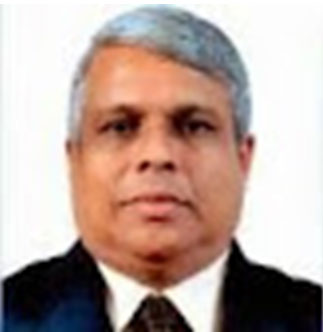
By Engineer Gerad Fernando
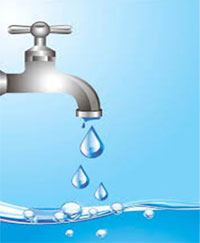 Every year “The World Water Day” is globally commemorated on 22nd of March. The United Nations, at the Conference on Environment and Development (UNCED) in Rio de Janeiro in 1992, decided to celebrate this day commencing from 1993, to raise awareness of the value of freshwater and to promote the sustainable management of freshwater resources. The UN also declares a theme for every world water day and the theme for 2025 is “Glacier Preservation”. This year World Water Day is more important for Sri Lankans as the “National Water Supply and Drainage “, the leading government agency responsible for provision of drinking water completes 50 years of its existence. This article briefly explains the beginning and evolution of NWSDB together with current challenges and how to overcome them.
Every year “The World Water Day” is globally commemorated on 22nd of March. The United Nations, at the Conference on Environment and Development (UNCED) in Rio de Janeiro in 1992, decided to celebrate this day commencing from 1993, to raise awareness of the value of freshwater and to promote the sustainable management of freshwater resources. The UN also declares a theme for every world water day and the theme for 2025 is “Glacier Preservation”. This year World Water Day is more important for Sri Lankans as the “National Water Supply and Drainage “, the leading government agency responsible for provision of drinking water completes 50 years of its existence. This article briefly explains the beginning and evolution of NWSDB together with current challenges and how to overcome them.History of pipe born water in Sri Lanka
There is some historical evidence that even in regimes of ancient kings of the island, pipes have been used to convey water from one place to another. During the recent history, there were evidence that piped water for domestic use had been provided in Dutch era in some areas such as Galle. However, a systematic piped water system has been established by British rulers in 1886 for northern and central parts of Colombo city. Water was obtained from a reservoir constructed at Labugama about 40 km east of Colombo. Water was conveyed under gravity to a ground reservoir constructed at Mattakkuliya in North Colombo. Later another ground reservoir was constructed at Maligakanda and supply from Labugama was supplemented by another reservoir at Kalatuwawa. Both Labugama and Kalatuwawa reservoirs are mainly fed from rain and therefore during the dry season adequate water could not be provided to the city. Considering the increasing demand of piped water for the capital city, the Government constructed a water treatment plant at Ambathale on the banks of Kelani River and supplemented the city water supply in early parts of 1960s. Gradually other major cities also got piped water although there were many issues regarding the quality and quantity.
Establishment of NWSDB
As in many other countries in the world, water supply in Sri Lanka was also under the respective local authorities (LAs), namely Municipal Councils and Urban Councils. There was a high interest in the provision of quality drinking water during the decade started in 1970 and many international assistance were available for the improvement of piped water in developing countries. The Government seriously considered this and realized that the capacity of LAs was not adequate to face the challenges of increasing demand for piped water. Therefore, a decision was made to establish a separate organization for improving piped water. Accordingly, by Act No 02 of State Council, NWSDB was established on 1st of January 1975. At the commencement, NWSDB took over 66 water supply schemes (WSS) of different capacities, located throughout the island and managed by respective LAs. According to the Act, LAs had the option of handing over water supply schemes (WSS) to NWSDB or retain them as it is. Accordingly, LAs in Colombo, Galle, Kandy, Bandarawela, Nuwaraeliya and a few others decided to continue their WSS on their own. The Board took over the remaining 66 WSS consisting of about 65,000 service connections.
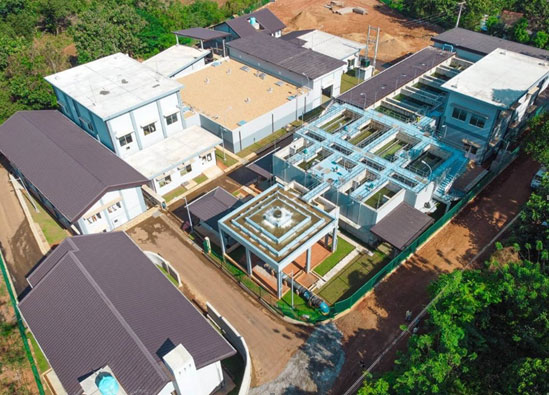
Matale Water Supply Scheme commissioned in year 2023
Evolution of NWSDB during the last 50 years
The NWSDB was a statutory board functions under a chairman and director board appointed by the Minister in charge of water supply. The Board was under the Ministry covering the local government or urban development from 1975 to 2007. A separate ministry for water supply was created in 2007 and under the present government as per their policy of reducing the number of ministries, the Water Ministry was scrapped, and the Board was attached again to the Ministry of Urban Development. During the last 50 years the Board has grown gradually and today it has become one of the leading organization in the country.
Achievements of NWSDB
During the last five decades the Board has been able to provide an invaluable service to the nation by providing pipe-born water with high quality ensuring a healthy nation. The major achievement in service of NWSDB are summarized as follows.
• Increase of water coverage
An indicator widely used in water supply is the percentage of people who have access to pipe born water. Starting with very low coverage in 1975, during the last five decades, the Board was able to increase the coverage to about 50%. Today, all major cities and other urban areas have been provided with water except for a few locations due to specific reasons. The total number of premises connected with piped water is about 3.15 million while 93% of them are domestic houses. Apart from houses, schools, business premises, government buildings, ports, airports, hospitals, industrial zones are among its customers. Many consumers get water complied with SLS and WHO standards and more than 12 hours a day.
Apart from the Board, people get their water needs from community managed rural water supply schemes (RWSS), tube wells, dug wells, rainwater harvesting and natural water flows. Present
coverage of water through various sources is as follows.

• Construction of Tubewells
Many people in rural areas have been suffering from difficulties in getting water for domestic use due to the absence of reliable water sources. Low ground water table in such areas makes it more difficult to get shallow well water. NWSDB started a programme in the 1980s to construct shallow and deep tubewells in such areas to provide water to them. With some foreign assistance the Borad was able to construct more than 5000 tubewells mainly covering rural areas to benefit the public.
• Establishment of rural water supply schemes
Small-scale RWSS have been operating in the country for a long period since the 1960s. RWSS are established in rural and plantation areas to provide domestic water needs for small communities who are suffering from regular water issues and do not have access to a major water supply schemes due to non-existence or low affordability. Rural water sector was further strengthened and many RWSS were constructed in 1980s under world Bank funded projects and later NWSDB interfered and provided many RWSS covering many parts of the country. Today, there are about 4000 RWSS maintained by user communities established under this concept and they cover 12% of the population of the country.
• Sewerage Services
Initially the Board was expected to handle the water supply while providing technical assistance to LAs for developing surface drainage systems. However, later the Board was entrusted to provide piped sewerage services as well. Accordingly, few sewerage systems for cities such as Kolonnawa, Dehiwala,Ratmalan, Hikkaduwa, Katharagama, and Kurunegala were constructed and managed by the Board while sewerage systems in many large housing schemes and vital government establishments such as the parliament are maintained by the Board. Additionally, the Board provided sanitation facilities to many rural houses, schools and healthcare facilities through various projects implemented.
• Creating a knowledge Hub and resource pool
The most important achievement of the Board is the creation of a knowledge hub and resource pool by engaging in water and sanitation activities during the five decades. Today, it has a wealth of knowledge on water and sanitation together with a pool of capable, learned and dedicated workforce who can undertake any critical task. Further, the Board has developed well equipped, accredited laboratories together with a state-of-the-art training and development center which provides services for any outside agencies as well.
Present Status
After spending five decades on the provision of water and sewerage services, the Board presently faces the following difficulties.
• Financial Sustainability
Water supply is a highly capital-intensive task. Many countries in the world, including some developed countries, provide capital funds for water services on a full or partial grant basis. The concept behind this is that the access to safe water and sanitation facilities has high yields of economic benefits. Following the same theory, the government provided capital funds for the Board through the national budget utilizing local funds as well as foreign loans and grants from the beginning. It was not necessary for the Board to pay capital funds back to the government till the mid-1980s. The water billing commenced in 1982 and with the revenue generation, the Board was directed to pay a portion of loans on an agreed basis. The agreed amount for repayment was 50% for urban WSS, and 25% for rural WSS. Due to the very low-income generation capacity of sewerage projects, no repayments were necessary for such projects. Water tariffs were also revised from time to time considering the increasing cost and by 2012, tariffs have been revised 14 times. With the revenue collected through water billing, the Board easily met the commitment of repayment which was between 10-15% of their annual budget. With capital funds provided by the government, the Board was able to remarkably increase the water coverage up to about 36% by end of year 2012.
By the year 2012, the Government was facing severe financial crisis. The total debt of the country has passed the GDP and obtaining further loans was highly restricted. At this juncture, the government advised the Board to directly obtain loans for capital works from local and foreign commercial and development banks. Accordingly, the Board obtained a large amount of funds from various sources. Most of the above facilities were in unfavorable conditions such as high interest, a less grace period and a short repayment period. They were very different compared to previous funding arrangements with very low interest, about 1-2%, a high grace period of about 5 years and a long repayment period of about 30 years. There were speculations that project costs are increased, and even not much needed projects are commenced due to the relaxation of funding mechanisms. The situation was further aggregated as the government did not allow revision of water tariffs since 2012. Therefore, by 2015 the financial position of the Board started to deteriorate. When the new government came to power in 2015, after realizing this issue, they temporarily stopped many ongoing projects. However, all of them were restarted after about a year and further loans were obtained.
In 2019, the financial situation became critical, and The Board was not able to fulfil its commitment on repayments. When the country faced severe financial crisis in 2022, the Board stopped all development projects except world bank and ADB funded projects. Having understood the critical situation of the Board, the Government allowed an increase of water tariffs in January 2024. This was the highest increase of water tariff in history where the average water bill of a domestic house was increased by 96%. Then again there was another increase in September 2024, imposing a further 11 % increase in domestic house water bill.
Some projects started after 2012 have now been completed while about another 26 projects will be completed within the next few years. With the approval for the tariff increase, the government has asked the Board to restart debt servicing. As of 2024 there were total loans of about RS 300 billion which must be paid back at an average of about RS 30 billion a year. The Board also took various measures to curb the operational costs to reduce the burden on public through tariff increase.
• Inadequate level of service
Provision of water services always must satisfy certain conditions. Provision of adequate quantity, satisfactory quality, sufficient pressure, availability in reasonable number of hours, timely billing and prompt response for complaints are key factors in the level of service. The status of them varies across the many WSS maintained by the Board. However, a significant number of consumers are said to be unhappy about their present status. The consumers compare the services provided by other service providers such as CEB and Telecom and they demand an increased level of service from the Board as well.
• Increasing cost of operation
The main components of the operational cost of the Board are manpower, electricity and chemicals. All of them are increasing annually and therefore the Board has taken various measures to reduce the costs. Staff recruitment has almost stopped for the last few years and many services have been outsourced. However, the increase in power cost and imported chemicals which are beyond the control of the Board create issues.
• High non-revenue water (NRW)
It is mandatory that any water supply system has a certain amount of non-revenue water. This is simply the water that is lost in the distribution and transmission of water. This is mainly due to water leaks and unauthorized water use. At present country wide NRW stands at about 25%. About 10 years ago it was around 32% and due to continuous efforts by the Board, it has now been reduced to 25%. But even this is not sufficient to run the organization healthy. Many developing countries in Asia such as Japan and Singapore have recorded NRW less than 10%.
Challenges in future and possible remedial measures
Having elaborated on history and present status, now attention can be paid to future challenges and possible actions for mitigation.
• Investments in new water supply schemes
As the Board has already encountered difficulties in meeting its debts, future investments in water supply must be undertaken with careful considerations. Many new WSS may not be individually financially viable and overall financial viability can be achieved only with national tariff adjustments. The water tariff also has been raised very heavily and there will be only very limited room for future tariff adjustments at least for the next few years. However, being a government organization, the Board may be pressurized to make future investments and, in such investments, clearly its implications must be thoroughly studied. The new government seems to be well understood this situation and during the 2025 budget speech, his excellency the president has stated that only one new WSS will be constructed during this year in addition to the completion of four ongoing projects.
• Increasing the level of service
As stated above the overall level of service on the Board is necessary to be improved. The Board must take the necessary steps to increase the level of service, and many remedial steps do not need additional funding. The Board has introduced a “Customer Charter” sometime back and action must be taken to reactivate it and maintain the supply complying to the charter, The Board must also remember that they have the monopoly of supply and if they are not prepared to provide the required service other parties may intervene in the process.
• Challenges due to climate change
There are predictions that climate change may seriously affect the drinking water supply. Presently more than 70% of WSS extract raw water from rivers and irrigation tanks. Due to climate change water flows in rivers are reduced and water collected at irrigation tanks may also be limited. As a result, the required amount of water could not be extracted for water supply. As many coastal areas have been fed with water extracted from nearby rivers, salinity intrusion along the rivers may seriously affect the water quality. In Sri Lanka, effects of climate change are not yet properly studied in many sectors, including the water sector. Therefore, the effects of climate change must be well investigated and remedial measures to be taken to address this situation.
• Increasing productivity
As in many other government agencies, the Board also experiences the low productivity of its employees. Although staff has been sharply cut down during the last few years, about 2500 employees are presently employed through manpower suppliers. As the largest component of the cost of water supply is human cost, action must be taken to increase productivity and reduce the cost in future.
• Reducing NRW
NRW reduction is also vital in improving the performance of the Board. At present NRW for WSS across the country varies within a large range from 15% to 40%, with an average value of about 25%. The corporate plan for the period from 2025 to 2019 stipulates to reduce NRW to 23% within the five-year period. A recently completed high value project funded by ADB has helped to reduce NRW in Colombo city from 36% to 20%. Similarly various measures are required to reduce NRW to achieve this target by 2029.
• Operating within the National Policies
A major setback in the Board is the change of policies from time to time. This fact spreads beyond the scope of the Board. As the Ministry handling water is authorized by the constitution for making national policies, several water and sanitation policies have been developed since 2002. The latest water policy and sanitation policy were approved by the government in 2024 and 2023 respectively. The above policies cover not only the activities of the Board but involvement of other sector agencies such as LAs, Department of National Community Water Supply, ministries of Education, Health and Environment, local and international NGOs, CBOs and civil society organizations. The main objective of the policies is the regulation and coordination of activities of all stakeholders to achieve sustainable development goals in water and sanitation collectively. The major issue in this regard is that although policies are established, no implementation mechanism is introduced. Therefore, such policies are limited to documents. Therefore, the Ministry (at present Ministry of Urban Development) should take an active interest in implementing such policies. The Board, as the strongest organization in the sector, must take the initiative on this.
• Assisting other Stakeholders in the sector
As per the corporate plan of NWSDB, the water coverage in 2029 by the Board is forecasted to be 58%. Therefore, even in 2029 a substantial portion of society will depend on other sources such as RWSS, dug wells, tube wells and rainwater harvesting for their waterneeds. The NWSDB is full of resources, and it has an obligation towards the public to provide necessary assistance in carrying out provision of water and sanitation by other sector holders.
This year’s World Water Day theme is “glacier preservation” reminds us that due to global warming glaciers are melting, creating many undesirable effects. In Sri Lanka also, we are facing many difficulties due to the absence of adequate water. Therefore, we must pay attention to preserving valuable. water resources
The author of this article is a Civil Engineer who served 34 years for NWSDB and retired as Additional General Manager. Presently he is a freelance consultant.
Comments
-
Still No Comments Posted.



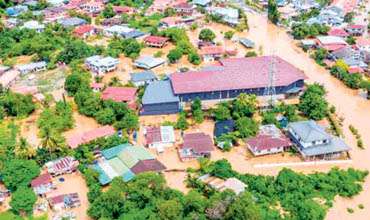

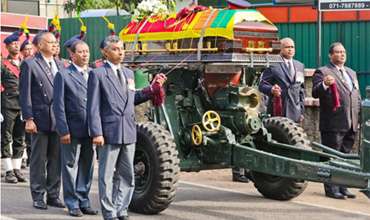

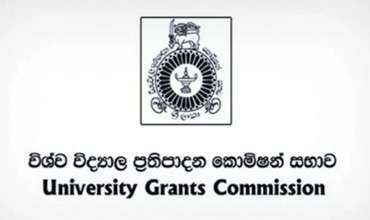
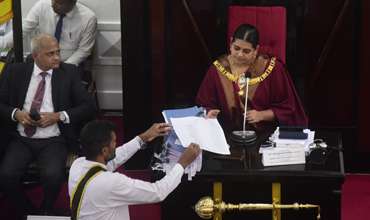
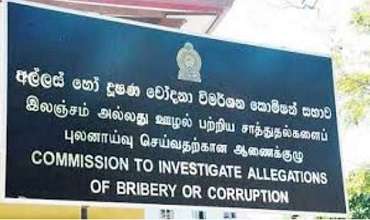
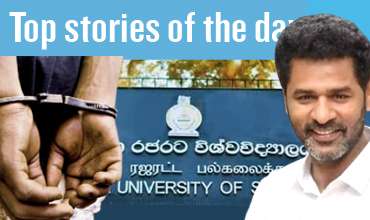

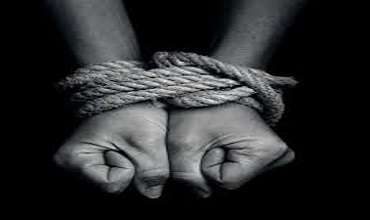
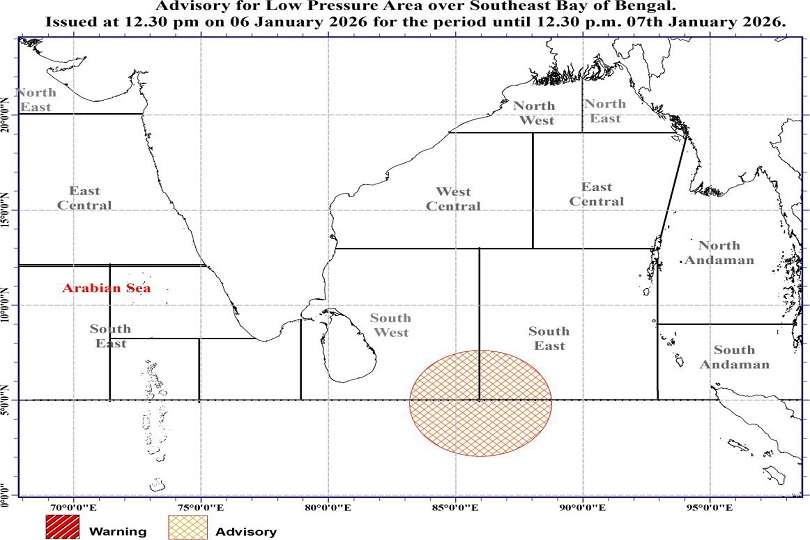
Leave Comments